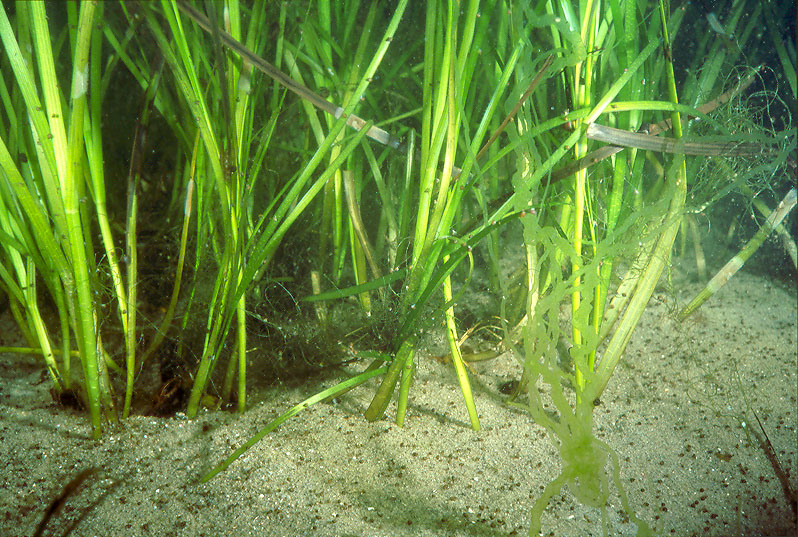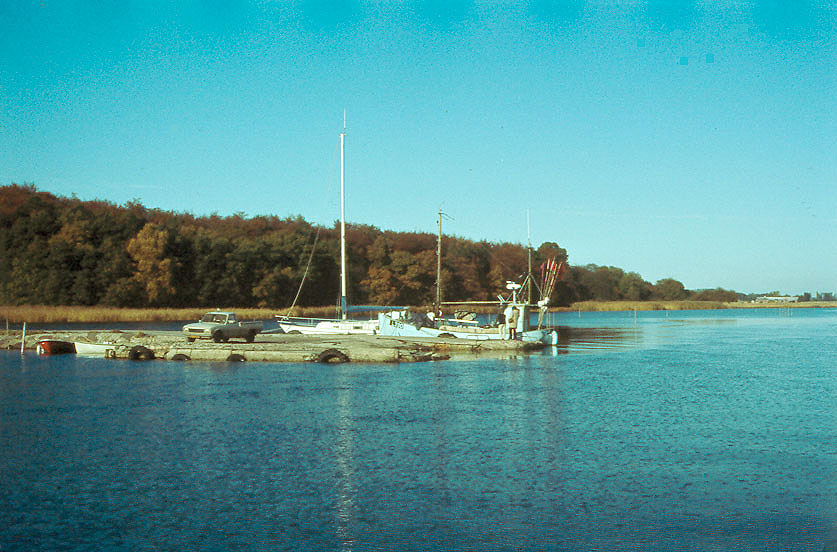Common Eelgrass, or Seawrack
(Zostera marina).Eelgrass is the most important plant growing on the fjord bed. It is part of the food chain for a wide range of species. Swans and wigeons eat the green leaves, whilst mallards prefer the seeds. Many fish and bottom-dwellers also live in the eelgrass meadows.

In some places eelgrass can form dense forests.
Eelgrass needs sunlight and its distribution therefore depends on water transparency. In Roskilde Fjord it grows to a depth of 2 – 3 metres, but it is hoped that water quality will eventually improve so that it can spread to deeper water. This is however a slow process, as one single year with poor water transparency can destroy large areas of eelgrass but, as it spreads mainly by means of rhizomes in the soft bottom, it can take a long time to repopulate the dead areas. The densest eelgrass beds are in water 1 – 2 metres deep, as for example in Ægholm shallows. These areas are good moulting sites for swans, which have easy access to abundant food while they grow new flight feathers after shedding the old ones.
In areas where there is no current, eelgrass is often covered in algae, but where there is a strong current, as in Skovrenden, between Østskoven and Eskilsø, this algal coating is minimal. Here there is dense growth of eelgrass, and the leaves can grow to over a metre in length.

In Østrenden eelgrass thrives because of the powerful current.
